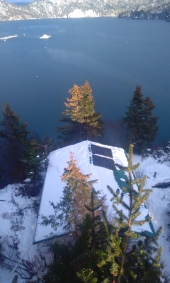I have a question. What is the specific reason behind required double skin of the masonry heater bell in USA?
Is it for gas tightness? If this is the case, what do you think about installing 2 or 3 mm 304L stainless steel welded walls INSIDE of the bell, separated from the outside masonry bell with 5-10 mm refractory wool?
The bell above the steel lining (and few courses below the riser top) would be double skin: outside masonry and refractory bricks inside with 10 mm wool separation.
Advantages:
The gas tightness would be better than any jointed masonry inner skin.
Not only it would block potential harmful gases leaving the bell, but also would prevent transfer of colder room air into the heater through expanded joints after it was heated. I have read that the open area in the expanded joints of tightly built (2 mm joints) kafel stove of a medium size can amount even to 400 cm2 (the size of a small stove door) assuming the expansion of 0.5 mm per joint. Opening of this size causes quicker cooling of the mass by expelling warm air through the chimney. In the past it was being solved by closing the chimney that was leading to quite numerous deaths by carbon monoxide poisoning.
So steel skin has real advantages. The masonry heaters covered with steel are called armored. Second steel skin on the exterior would not be visually attractive and it would be hidden inside.
It would not affect the responsiveness of the lower single-walled part of the bell with steel thermal conductivity 15 times higher than hard bricks.
Potential disadvantages:
Warping. However measurements done by Fiedia on donkey32:
Bell temperature measurements
indicate that lower parts of the bell are much cooler than the top, not exceeding 250 C.
Coefficient of thermal expansion for 304L is 17.8 in the range 0-315 C, so a 1 meter piece would get elongated by 5 mm at 300 C.
The structure could have two horizontal diagonal braces.










